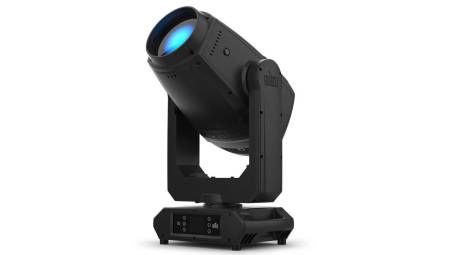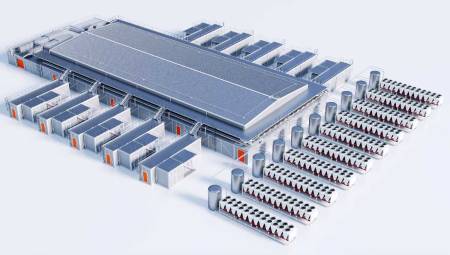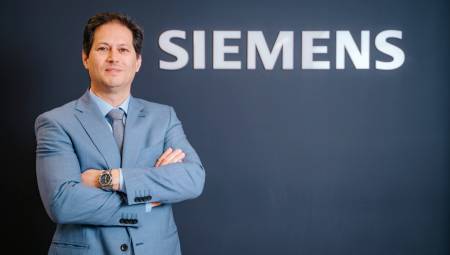Within his usual theme of energy management, the author makes an exposition on the benefits of UPS for certain AV equipment.
By: Garth Powell*
Several years ago, UPS backup battery devices belonged exclusively to the domain of information technology professionals. UPS systems were designed to be placed under office desks and in server cabinets to keep computer systems connected long enough to overcome a short outage or shut them down delicately in prolonged power outages. However, over the years, we have experienced a massive proliferation of audiovisual digital components. Hard drives, flash drives and advanced microprocessors have come out of the IT closet to expand into the racks of audiovisual equipment. From media servers to digital consoles, the threat of data loss or system failure in the event of a power outage is now as prevalent in A/V systems as it has been for IT systems.
Energy Management Solutions
It is clear that a UPS (uninterruptible power supply) has its place in any higher-end av installation, but unfortunately this can lead some integrators to rely solely on such a device for most, or perhaps all, of alternating current (AC) power management. Additionally, many UPS devices are mistakenly sold as complete AC power solutions in a box. Although simplicity can be a virtue, any system is only as good as its weakest connection and a quality audiovisual system must be based on solid foundations. Multiple problems and energy demands will require more than one technology. Just as no two customers or similar locations are present, the requirements and performance characteristics of any A/V system will vary, and sometimes radically.
The use of different AC power technologies poses advantages and disadvantages, and it is vital that a system specifier can identify which one is most appropriate for their needs. For example, some professional audio-visual equipment, such as contact screen control systems or digital consoles, is vulnerable to milder power outages or blackouts and would benefit greatly from a UPS. One reason for such irregular sensitivity is that the electrical supplies those components use are almost always switched electrical supplies, which do not use the transformer technology employed by virtually all electronic devices during their first 70 years of existence. Transformer-based supplies (traditional linear electrical supplies) have many performance advantages, but are generally heavier, more expensive, and can radiate circuit-distorting magnetic fields. On the other hand, they generate very little noise compared to switched supplies and are able to overcome a blackout by several seconds.
Switched supplies, however, are susceptible to complete disconnection in less than one-sixtieth of a second. That's no problem for an analog processor, preamp, power amplifier, or flat-panel monitor, as they will return to work as soon as power is restored. But vital components, such as a digital console or media server, possess numerous logic circuits that can go through a very long restart sequence after any power loss event. In addition, if the power supply is lost and restored in a fraction of a second (but more than a sixtieth of a second), the last configuration may freeze or the default parameters may be lost temporarily, and even permanently.
A common solution in this situation is to isolate the component that has been "stopped" and simply restart it by disconnecting the power for a few seconds or more, and then turn it back on. This usually works, but it is not an acceptable practice for a client expecting a hassle-free operation, particularly minutes after the time of the performance at a concert venue. Or the contractor may be forced to introduce a truck every time a media server or satellite receiver is "locked." In these cases, a backup battery is an absolute must.
Equipment and UPS
Another component that can benefit greatly from a UPS device is a video projector. All projectors, including older television sets with a rear screen, contain bulbs that must be cooled after use, or else they would suffer permanent damage. Video projectors cool the bulbs automatically with a built-in fan, which typically runs eight to ten minutes after the projector has been turned off. However, the fan depends on there being main power from the electric service for the cooling period, long after the spectators have left. If there is a sudden loss of power from a blackout, and the projector has been running for several minutes or hours, an expensive bulb will be damaged and will need to be replaced.
That said, there are apps where UPSs aren't the best choice, or even the appropriate device. An important consideration when choosing energy management solutions is the current used. A random sampling of the current consumption used in different audiovisual installations could yield the following results:
- Projector (2 – 5 amps)
- Digital console (2 amps)
- 50-inch LCD display (3 amps)
- 1000 watt stereo amplifier (6 to 10 amps – only one)
- Media Server (3 Amps)
What we see here is that without including a contact screen control device, or any of the numerous av processors that may be required to complete the system, we are demanding more than 20 amps.
A UPS installable in a relatively large rack will typically vary between 1,000 and 3,000 VA. UPS manufacturers calibrate current capacity in VA (volt-amps) rather than watts, because the available current will vary with inductive, capacitive, or resistive load types. For this reason, the capacity calibration in VA must be lowered somewhat to ensure sufficient capacity regardless of the connected device. Commonly, a 1,000 VA UPS will generate about 5 amps maximum; 1,500 VA will generate 7.5 amps; and 3,000 VA will generate 15 amps. What should be evident is that a UPS simply lacks the current capacity to power an entire system, unless multiple UPSs are used, or an industrial unit with a cooling room to ensure proper operation.
Other considerations
However, there are other concerns besides current capacity. Even if the UPS in question incorporates AC noise filtering, it may not have the more sophisticated linearization filtering that many audio processors and flat-screen video monitors would greatly benefit from. In fact, most UPS voltage conditioners are built for server rooms and computer cabinets in IT departments without the exacting standards of high-definition theaters or transmission studios. While any UPS will feature some limited filtering capabilities, the technologies they employ are typically inferior to technologies that incorporate symmetrical electrically insulated transformers and ultra-wideband linearizing filters that can remove AC noise so detrimental to performance at audio frequencies, not simply medium radio frequency noises centered around 1 MHz. which are easy to remove.
Another problem for any UPS device is that its technology employs series circuits that convert energy from direct current batteries into a synthesized waveform of alternating current, in addition to routing input power through a small automatic transformer to regulate extreme drops or spikes in AC input energy. That technology is inescapable if the UPS is to work properly, but it raises the AC impedance considerably. This is not a concern for your control system or even for a video projector. Your power amplifiers, however, will take a big hit when volume levels are run.
Audio playback today can exceed 90 dB dynamic range, and ensuring that it meets professional standards is necessary for the power amplifier to operate at full capacity, without limitations by AC power. Sadly, even a large UPS device can act as the equivalent of a 30-meter AC extension connected to your power amplifiers. When the amplifier needs a fast current supply during a dynamic step or theatrical explosion, the high-impedance device will act as a clamp, limiting the transient current that the amplifier needs so urgently.
Another common case is live events or companies that use backup generators. For stable operation, AC voltage regulation must have a wide capture rate, low AC impedance, and the sensitivity to quickly compensate for even minimal fluctuations. The voltage regulation circuits used for UPS devices are simply not up to the task. These units exist primarily to minimize battery usage. When voltages reach extremely high or low peaks, a small automatic transformer adjusts to a voltage relatively in the range of nominal alternating current volts (ACVs) from 120 to 127. However, it is switched with a relatively small relay not designed for professional high-current devices. One way to benefit from a UPS for the appropriate components, such as computers or media servers, when using a diesel or petroleum generator, would be to connect it to a true RMS voltage regulator.
On the other hand, these high-voltage electrical conditioners and advanced AC voltage regulators cannot offer battery backup to an RS-232 control system, and a video projector will never suffer from current compression. Different components may require different technologies to perform optimally. A single AC power management component may be sufficient for a simple system, but it will not be for most professional AV systems. By defining the different AC management technologies for your installation, you can begin to formulate an integrated system approach that emphasizes using the right tools and in the right places.
*Garth Powell is a principal product designer and chief sales engineer at Furman, a global leader in the supply of electrical control solutions. It can be contacted at: [email protected].














